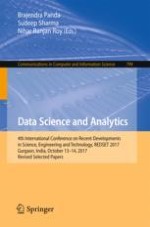2018 | Book
Data Science and Analytics
4th International Conference on Recent Developments in Science, Engineering and Technology, REDSET 2017, Gurgaon, India, October 13-14, 2017, Revised Selected Papers
Editors: Dr. Brajendra Panda, Sudeep Sharma, Nihar Ranjan Roy
Publisher: Springer Singapore
Book Series : Communications in Computer and Information Science
